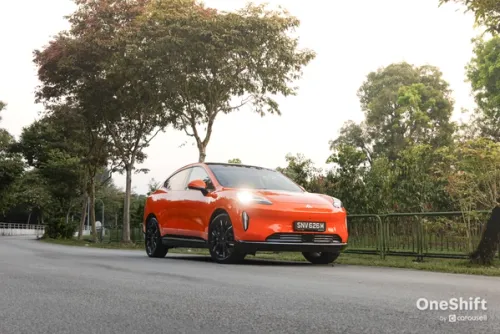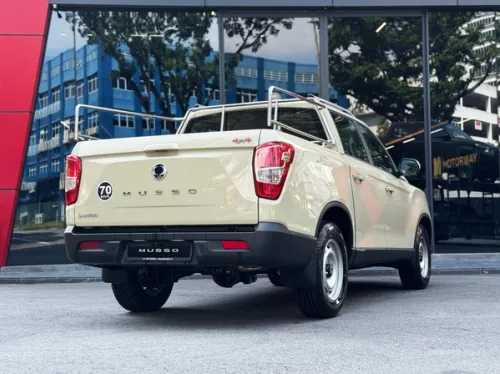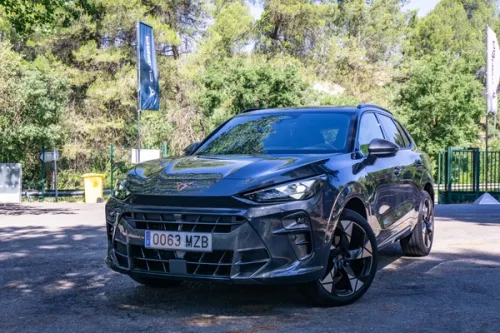First Look: Jaguar C-X75
The 'Electrified' Jaguar is capable of reaching 330km/h (205mph), sprinting from 0-100km/h (62mph) in just 3.4 seconds and blistering acceleration from 80-145km/h (50-90mph) in just 2.3 seconds


Jaguar has revealed a stunning range-extended electric supercar concept car. The C-X75 has been designed to celebrate 75 years of the marque and provide a glimpse into the future of Jaguar and its commitment to producing beautiful, fast cars powered by sustainable means.
The C-X75 hints at an exciting evolution of Jaguar's design language while paying homage to some of its most admired cars of years gone by. Advanced design features such as a ground-breaking propulsion system and active aerodynamics allow for an elegantly simple fuselage section that remains stable at very high speeds.
The C-X75 is finished in Jetstream Silver, its designers staying true to the long-held Jaguar design philosophy of natural, flowing lines and simple, elegant forms. Where inspiration from the past was found is in the innovative engineering and functional design elements of cars like the 1950s C-Type and D-Type racers and unique 1966 XJ13 Le Mans prototype – a car described by Callum as, “arguably the most beautiful Jaguar ever made”.
Shorter and lower than the current crop of supercars, its exterior design is about pure performance with a simple central fuselage surrounded by prominent wheel arches. Thanks to the packaging efficiencies provided by the absence of a conventional piston engine, the car’s designers had maximum freedom in placing the mechanical components and creating the most elegant engineering package available.
The 330km/h (205mph) four-wheel drive supercar is capable of running in purely electric (zero tailpipe emissions) mode for 110km (68 miles) on a six-hour domestic plug-in charge. The innovative, lightweight micro gas-turbines are also capable of very quickly and efficiently recharging the Lithium-ion batteries, giving the car a theoretical range of 900km (560 miles).
This remarkable range-extension system is a result of Jaguar’s research engineers adopting a clean-sheet approach to the question of powering the supercars of the future. The C-X75 turns to the very latest evolution of a pioneering British technology: the gas turbine.
Developed in partnership with Bladon Jets, the miniaturised turbine blade - the first viable axial-flow micro-turbine - increases the compression and efficiency of micro gas-turbines to the point at which they can be viewed as a realistic power source. Each of the micro gas-turbines weighs just 35kg and produces 70kW of power at a constant 80,000rpm.
The energy created by the turbines and stored in the batteries is transmitted to the road using four independent electric motors. Using individual motors has benefits in terms of weight-saving and distribution, packaging and efficiency. Each motor weighs just 50kg but produces 145kW (195bhp) of power and an astonishing combined total torque output of 1600Nm (1180lb ft).
Because each wheel is driven by its own electric motor, the C-X75 is four-wheel drive – with all the traction, grip and safety benefits that entails – without the weight disadvantages of a purely mechanical set-up. Inherent in this drivetrain is the ability to independently vector torque to each wheel across the full speed range. This offers potential benefits in terms of stability and control, creating an infinitely and instantaneously adjustable traction and stability control system.
"Performance through innovation has always been a Jaguar trademark. From the beginning, cars such as the C-Type and D-Type pioneered aluminium construction, aerodynamic design, racing monocoques and disc brakes. The C-X75 demonstrates that Jaguar is still leading the field automotive design and technology. And will always continue to build beautiful, fast cars." Ralf Speth, Chief Executive Officer, Jaguar Land Rover
Credits: wilswong


Get the Best Price for your used car
from 500+ dealers in 24 hours

- Convenient and Hassle-Free
- Consumer Protection
Transparent Process
With No Obligation








